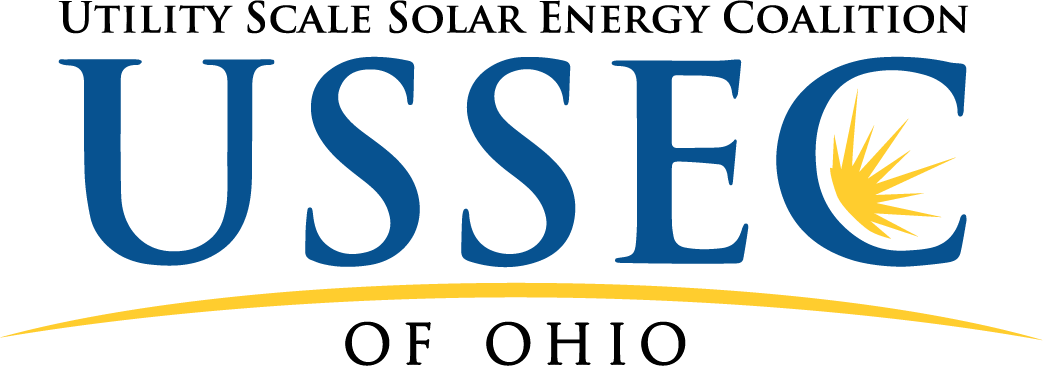Frequently Asked Questions
What is “utility-scale solar?”
While there is no “hard and fast” definition, the Utility Scale Solar Energy Coalition of Ohio (USSEC) defines “utility-scale solar” as any solar generated that is tied to the transmission grid. The Regional Transmission Organization (RTO) that services Ohio is PJM. Large-scale solar facilities typically generate over 50 megawatts of power - enough to contribute to Ohio’s electric grid directly.
These projects must go through a stringent state review and approval process. There has been a major drop in the cost of solar generation over the past decade, making it cost competitive with, or cheaper than, traditional coal, nuclear or natural gas.
Is there enough sunny weather in Ohio for this?
Yes! Improved solar technology allows for power generation year-round, with peak production between late spring and early autumn (the hottest and sunniest times of the year), exactly when demand for electricity is greatest.
Why are there so many solar developers coming to Ohio all at once?
With rapidly increasing demand by Ohio employers, communities and residents, combined with major declines in the cost of solar generation and the state's ideal conditions to develop solar fields, clean energy has become an integral part of Ohio's energy mix. The Buckeye State has an abundance of flat land, a robust overhead transmission network and a good climate.
Are the solar panels safe?
Absolutely. Solar panels are one of the cleanest and safest forms of power generation available. Solar panels are made of non-toxic and damage-resistant materials made to last for decades in harsh environments. They contain no liquids that can spill or any materials that could result in a chemical fire. Many solar developers recycle panels when they need to be retired.
What happens to the solar panels at the end of their useful life?
There are strict requirements by the state to safely remove (or "decommission") the panels when they are no longer functional, and return the land to its current condition. The estimated life of the projects is 40 years. Ohio law requires funding be in place to pay the decommissioning costs.
Are drainage systems protected during construction?
Proper drainage and stormwater management are critically important to solar developers. Developers take immense efforts to ensure these systems are protected during site construction. In the instance that something is damaged, developers are required to quickly repair or replace any drain tile that is damaged during construction and work with Ohio EPA to ensure robust stormwater systems are in place.
Where are these projects possible in Ohio?
Sites are selected based on factors including proximity to transmission lines, flat land, and weather. Flood plains, wetlands and supportive geology are also considered.
What does utility-scale solar mean for Ohio jobs?
More than 7,200 individuals currently work in the solar industry in Ohio. That figure will quickly escalate. Ohio ranks 7th in the nation in solar energy labor force, and a recent Ohio University study estimates that 30% of components used in Ohio projects are made here in Ohio, creating a reliable supply chain of Ohio businesses and industry.
What do solar farms look like?
Solar panels have a low profile and feature setbacks and vegetative screening around the perimeter. Solar farms are easy to screen from sight with trees and large shrubs given the flat contour of most sites, minimizing visual impacts to neighbors.
What is the review/appeal process?
All solar developments that generate greater than or equal to 50 megawatts go through an extensive and collaborative process involving the developers, the landowners and the community, followed by a rigorous review process by the Ohio Power Siting Board (OPSB). The OPSB process is considered one of the most stringent and thorough in the nation and involves the Ohio EPA, the Public Utilities Commission of Ohio and the departments of Agriculture, Health and Natural Resources. The process involves numerous public hearings and opportunities for stakeholder input.
What can be expected during and after construction?
Construction generally lasts 12-18 months and there will be increased traffic, building activity and some noise during that phase. Once the project is operational, solar arrays are visually unobtrusive, have little to no lighting and are essentially silent.
I didn’t see my question here. Can I contact someone?
If your question was not answered on this page or others on our website, please send an email to info@ohiosolarcoalition.com and a member of our team will be in touch as soon as possible.
